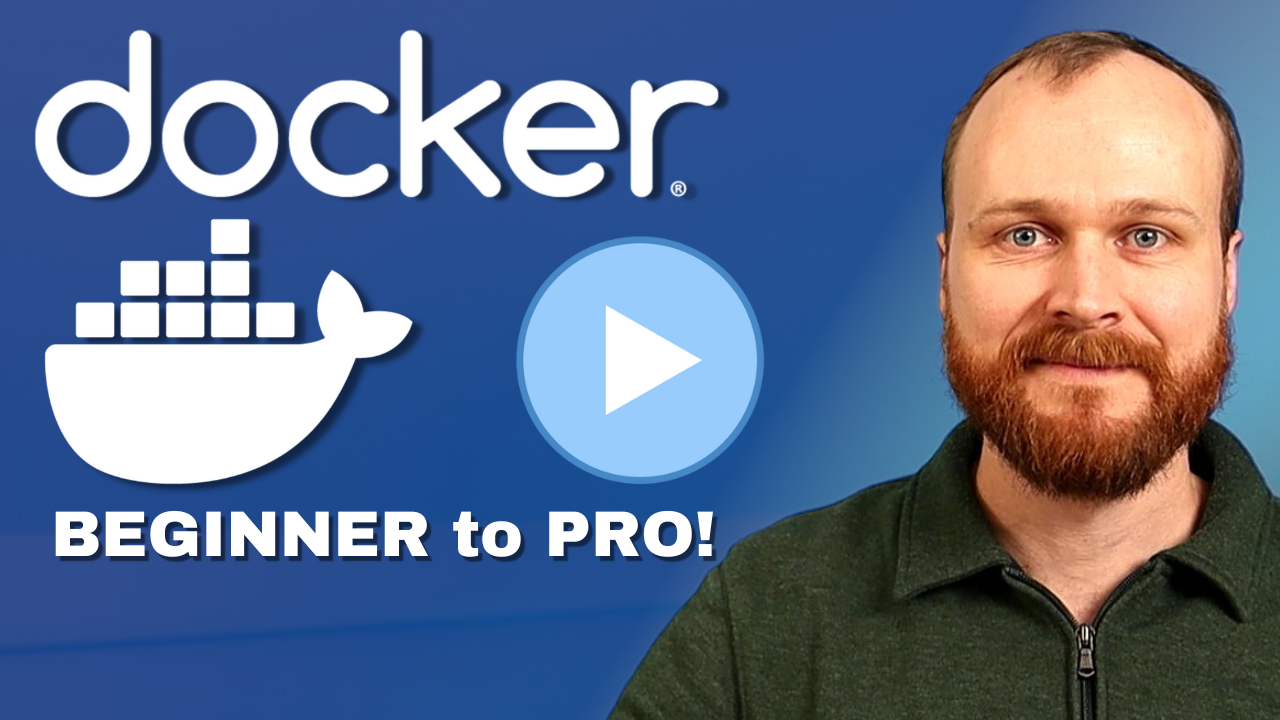1: History and Motivation
Examine the evolution of virtualization technologies from bare metal, virtual machines, and containers and the tradeoffs between them.
2: Technology Overview
Explores the three core Linux features that enable containers to function (cgroups, namespaces, and union filesystems), as well as the architecture of the Docker components.
3: Installation and Set Up
Install and configure Docker Desktop
4: Using 3rd Party Container Images
Use publicly available container images in your developer workflows and learn how about container data persistence.
5: Example Web Application
Building out a realistic microservice application to containerize.
6: Building Container Images
Write and optimize Dockerfiles and build container images for the components of the example web app.
7: Container Registries
Use container registries such as Dockerhub to share and distribute container images.
8: Running Containers
Use Docker and Docker Compose to run the containerized application from Module 5.
9: Container Security
Learn best practices for container image and container runtime security.
10: Interacting with Docker Objects
Explore how to use Docker to interact with containers, container images, volumes, and networks.
11: Development Workflow
Add tooling and configuration to enable improved developer experience when working with containers.
•Developer Experience Wishlist
12: Deploying Containers
Deploy containerized applications to production using a variety of approaches.

Hot Reloading
Even with layer caching, we don't want to have to rebuild our container image with every code change.
Instead, we want the state of our application in the container to reflect changes immediately. We can achieve this through a combination of bind mounts and hot reloading utilities!
The full docker-compose.yml file can be found here: https://github.com/sidpalas/devops-directive-docker-course/blob/main/11-development-workflow/docker-compose-dev.yml
React Frontend
Vite is already designed to handle hot reloading, so all we need to do is bind mount our source code directory into the container at runtime.
volumes:
- type: bind
source: ../05-example-web-application/client-react/
target: /usr/src/app/
- type: volume
target: /usr/src/app/node_modules
Here we can see the source code location is mounted to the path we specified as WORKDIR in the Dockerfile.
We also add a second volume with NO source mounted to the location of the node_modules directory just in case we have installed the node modules locally. This takes precedence over the bind mount and prevents those unwanted files from being mounted in.
Node API
We will be using nodemon to watch for changes and restart the node server.
First, install it as a development dependency:
npm install --save-dev nodemon
Then, refactor the Dockerfile to have a separate dev stage which includes development dependencies:
FROM node:19.6-bullseye-slim AS base
WORKDIR /usr/src/app
COPY package*.json ./
#------------------------------------------------
# Separate dev stage with nodemon and different CMD
FROM base as dev
RUN --mount=type=cache,target=/usr/src/app/.npm \
npm set cache /usr/src/app/.npm && \
npm install
COPY . .
# "npm run dev" corresponds to "nodemon src/index.js"
CMD ["npm", "run", "dev"]
#------------------------------------------------
FROM base as production
ENV NODE_ENV production
RUN --mount=type=cache,target=/usr/src/app/.npm \
npm set cache /usr/src/app/.npm && \
npm ci --only=production
USER node
COPY --chown=node:node ./src/ .
EXPOSE 3000
CMD [ "node", "index.js" ]
We then can specify the dev as the target for our docker compose build configuration and add the bind mount to our compose file:
build:
context: ../05-example-web-application/api-node/
dockerfile: ../../06-building-container-images/api-node/Dockerfile.9
target: dev
volumes:
- type: bind
source: ../05-example-web-application/api-node/
target: /usr/src/app/
- type: volume
target: /usr/src/app/node_modules
And our Node API will have hot reloading!
Golang API
Since golang is a compiled language, for hot reloading, we actually need to recompile with each code change. We will be using https://github.com/cosmtrek/air for this.
There is no concept of dev vs. production dependencies within the go.mod file, so we can update our Dockerfile to create a separate dev stage and install Air there:
FROM golang:1.19-bullseye AS build-base
WORKDIR /app
COPY go.mod go.sum ./
RUN --mount=type=cache,target=/go/pkg/mod \
--mount=type=cache,target=/root/.cache/go-build \
go mod download
#------------------------------------------------
FROM build-base AS dev
# Install air for hot reload & delve for debugging
RUN go install github.com/cosmtrek/air@latest && \
go install github.com/go-delve/delve/cmd/dlv@latest
COPY . .
CMD ["air", "-c", ".air.toml"]
#------------------------------------------------
FROM build-base AS build-production
RUN useradd -u 1001 nonroot
COPY . .
RUN go build \
-ldflags="-linkmode external -extldflags -static" \
-tags netgo \
-o api-golang
FROM scratch
ENV GIN_MODE=release
WORKDIR /
COPY --from=build-production /etc/passwd /etc/passwd
COPY --from=build-production /app/healthcheck/healthcheck healthcheck
COPY --from=build-production /app/api-golang api-golang
USER nonroot
EXPOSE 8080
CMD ["/api-golang"]
With this updated, we can modify the docker compose to target the dev stage and bind mount the source code:
build:
context: ../05-example-web-application/api-golang/
dockerfile: ../../06-building-container-images/api-golang/Dockerfile.8
target: dev
volumes:
- type: bind
source: ../05-example-web-application/api-golang/
target: /app/